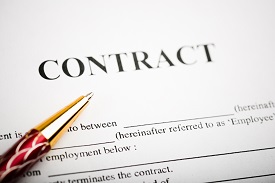 The United States District Court of Maryland recently held that a waiver of subrogation clause found in an AIA agreement can be superseded by subsequent contract language between the contractors. In Turner Construction Co. v. BFPE Int’l, 2016 WL 1169938 (D. Md. Mar. 25, 2016), a general contractor brought suit against its subcontractor for property damage that occurred during renovations of a commercial property. The subcontractor argued that it was free from liability pursuant to the waiver of subrogation clause found in the prime contract between the owner of the property and the general contractor (AIA Document 201-2007™) (the “Prime Contract”).
The United States District Court of Maryland recently held that a waiver of subrogation clause found in an AIA agreement can be superseded by subsequent contract language between the contractors. In Turner Construction Co. v. BFPE Int’l, 2016 WL 1169938 (D. Md. Mar. 25, 2016), a general contractor brought suit against its subcontractor for property damage that occurred during renovations of a commercial property. The subcontractor argued that it was free from liability pursuant to the waiver of subrogation clause found in the prime contract between the owner of the property and the general contractor (AIA Document 201-2007™) (the “Prime Contract”).
At issue was the battle between provisions from two separate contracts: (1) the Prime Contract between the owner and the general contractor; and (2) the Subcontract between the general contractor and the subcontractor. The Prime Contract included a waiver of subrogation clause that the subcontractor sought to enforce; it stated “[t]he Owner and Contractor waive all rights against . . . each other and any of their subcontractors” (emphasis added). On the other hand, the Subcontract included an assumption of liability clause wherein the subcontractor “assumed the entire responsibility and liability for any and all actual or potential damage or injury of any kind whatsoever . . . to all property . . . caused by, arising out of or occurring in connection with the execution of the [Subcontract] Work.”
The subcontractor attempted to invoke the waiver of subrogation clause found in the Prime Contract and moved for summary judgment. At bottom, the two competing interests were whether the Prime Contract’s waiver was applicable to a subcontractor who was not a signatory, or whether the Subcontract’s assumption of liability clause applied.
Although the court recognized that in some instances other courts found that a subcontractor can rely on the waiver of subrogation clauses in prime contracts, no case dealt with an assumption of liability clause as strong as the one at issue here. The court stopped short of ruling that the assumption of liability clause controlled, and instead, determined that because of the ambiguity as to the parties’ intent between the Prime Contract and Subcontract, additional extrinsic evidence was needed. But tellingly, the court recognized that the burden to enforce the waiver was on the subcontractor, and without extrinsic evidence displaying the parties’ intent that the waiver controlled, the assumption of liability found in the subcontract would be enforced.
In reaching this decision, the court stated that this may be a “case in which the obvious public-policy benefit of orderly and predictable insurance planning at the outset of a venture must yield to the explicit arrangements between a general contractor and the subcontractors with which it chooses to transact.”





